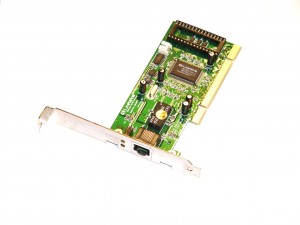 I was recently speaking with a colleague in Germany who was commenting about the recent request for public comment around the OUI Restructuring proposed by the IEEE RAC. You can find all the details in the draft document along with this presentation.
I was recently speaking with a colleague in Germany who was commenting about the recent request for public comment around the OUI Restructuring proposed by the IEEE RAC. You can find all the details in the draft document along with this presentation.
Unlike IPv4 addresses which are 32-bits long, the Ethernet MAC address is 48-bits in length and can provide a total of 281.5 trillion possible addresses. The first 3 bytes (24-bits) are reserved for identifying the vendor or manufacturer while the remaining 3 bytes (24-bits) are used to provide unique addresses to each device. As it exists today you could have 16.7 million unique addresses across 16.7 million unique vendors and/or manufacturers.
What devices have MAC address assigned;
- Hardwired Network Adapters
- Wireless Network Adapters
- Bluetooth Adapters
You can find a MAC address in any of the following devices;
- Smartphone
- Tablet
- Laptop/Desktop
- Server
- Virtual Server
- Printer
- Cable STB (Set-Top-Box)
- Cable Router
- Wireless Router
- DVD/BlueRay player
- Bluetooth Headset
- IP Phone
- IP Camera
- Video Conference System
- Switch/Router/Bridge
- Wireless Access Point
The IEEE is proposing a change with how those addresses are allocated to help better utilize wasted address space as well as address virtualization challenges by creating large private address blocks for use within large virtualization deployments.
While a public IPv4 address needs to be unique across the entire Internet, a MAC address only needs to be unique across a Layer 2 network. It’s also worth noting that Layer 3 switches can have a unique MAC address for every port, so if you have a Layer 3 switch such as the Cisco Nexus 7010 or the Avaya VSP 9000 with 384 ports you’ll have 384 unique MAC addresses in that switch.
I downloaded the latest OUI table and counted about 17,597 assignments which means we have quite a ways to go before we exhaust the address space. I don’t see any issue with the proposed changes but I’m curious what everyone else thinks?
Cheers!
References;
http://en.wikipedia.org/wiki/MAC_address
While not an immediately pressing issue, you have to think the existing MAC address system was only created to support the needs of network adapter cards in PC’s connected to LAN’s. My laptop I have has a MAC for it’s wired network port, it’s wireless network port, it’s Bluetooth card and Firewire port and I have a smartphone with a MAC for it’s wireless and another one for it’s Bluetooth adapter plus one for my Bluetooth headset. So the MAC address system is being used now for much. much more than it was originally designed for. A good sit-down and rethink how we are going to do this isn’t such a bad idea.
I’ve been wondering how much longer we will keep Ethernet with all of its limitations and problems ?
It COULD be replaced since it’s only local to the link. In the past we had Token Ring and FDDI in addition to Ethernet which sort of proves we could replace it.
Maybe we could simply move to a new protocol at Layer 2 ?
Ferro,
wait.. Ethernet limitations and problems? I thought we adopted Ethernet because Token Ring, FDDI, ATM all had too many problems while Ethernet had none? Well it doesn’t matter anyway because with SDN to get us to the cloud all our problems will be solved….forever.
The problem is not that we are running out of MAC adresses, the vendor segemantation is more problematic. If you take a look in the oui you can find some unbelivable obsolate reservations.
IMHO Ethernet has its limitions, but it still serves us good enghough.
Is anybody working on a new Layer 2 protocol atm ?
The least two significant bits of the first octet of the OUI determine if the MAC address is either unicast/multicast, and if the MAC address is locally unique or globally unique. That means there’s about 4 million OUIs, instead of 16. That’s still a lot, but the presentation said they’re shooting for 100 year life span. Dang.
Who keeps track of all the Mac-adresses? Can I be certain that the mac-address on the 10 base T card I have had lying on the shelf the last 15 years never have been duplicated?
The IEEE maintains and MAC OUI tables and registration process.
http://standards.ieee.org/develop/regauth/manid/index.html
Cheers!